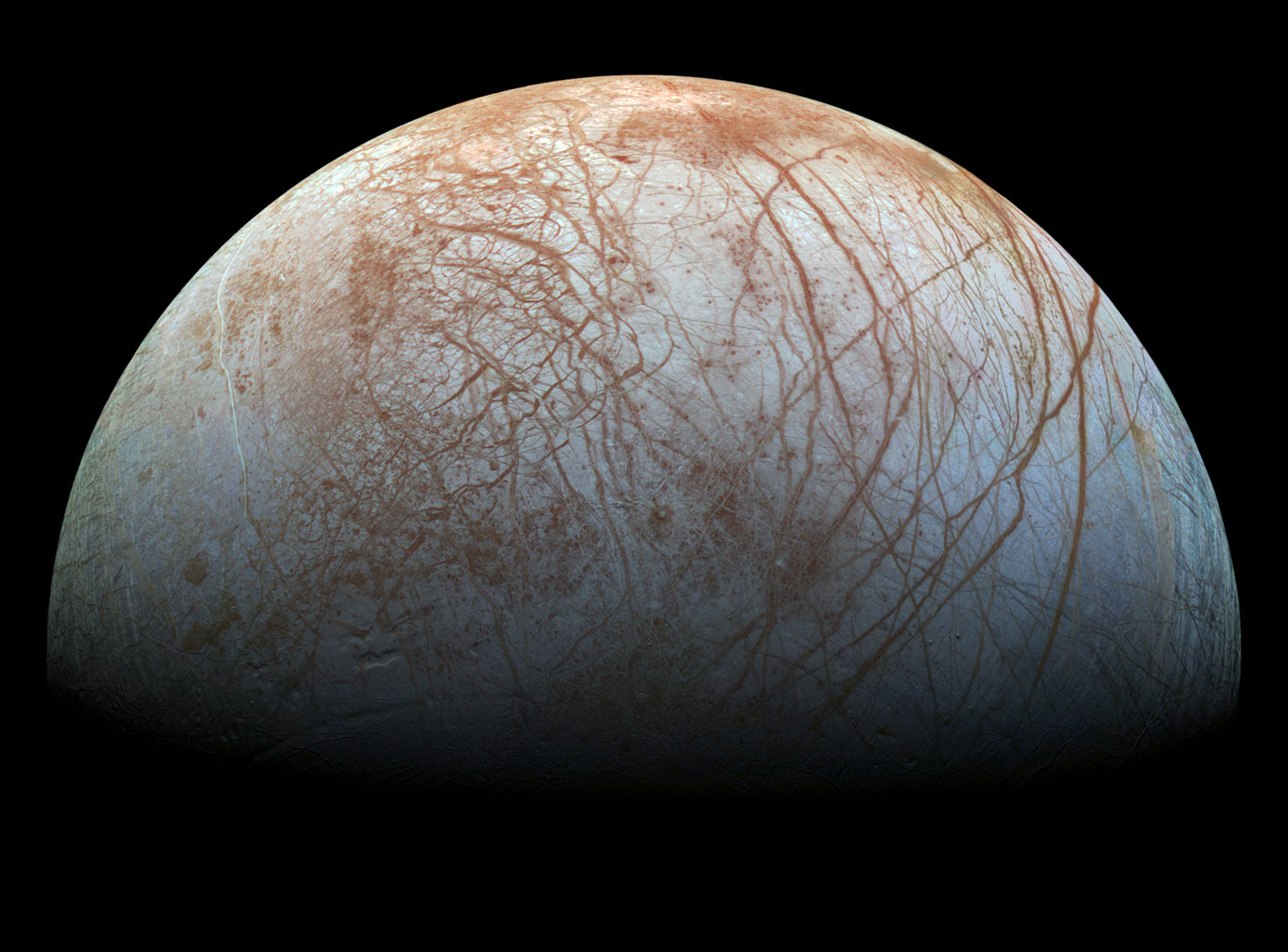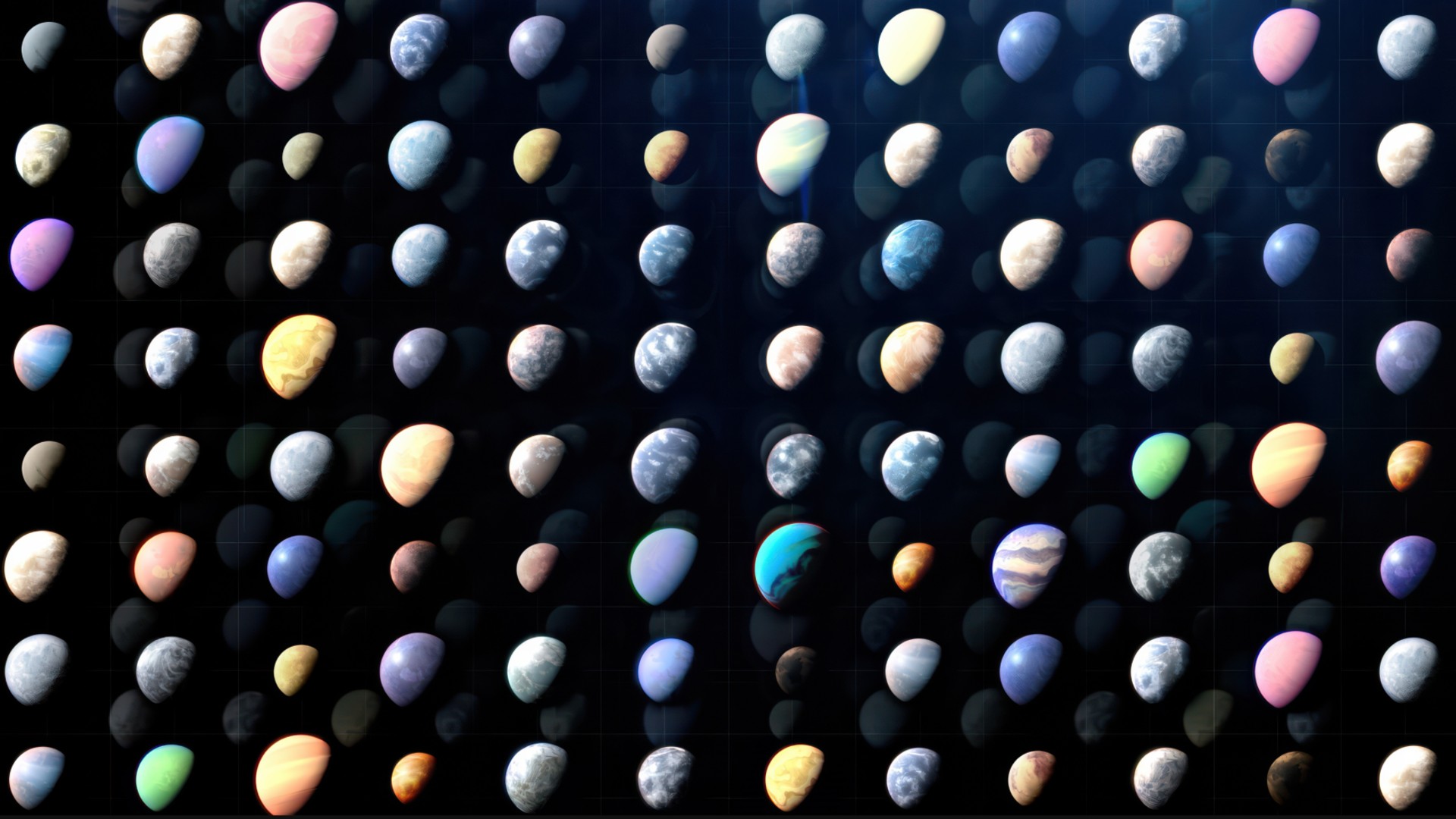NASA Unveils Most Amazing View of Jupiter's Moon Europa Ever (Video)
An incredible, reprocessed picture of Jupiter's moon Europa shows the mysterious natural satellite's amazing colors as they have never been seen before.
The original photos of Europa were collected by the Galileo spacecraft, which explored Jupiter and its moons from orbit in the 1990s. NASA officials reprocessed Galileo's data using modern imaging techniques that improved on an enhanced-color view of Europa the agency created in 2001. The new photo, released on Nov. 21, shows the largest proportion of Europa's surface at the highest images resolution, NASA officials said.
NASA released the picture as the agency pushes forward with plans to explore Europa in the coming decades, based on the theory that there is water lurking underneath the moon's icy shell. That water could host life, under the right conditions, scientists have said. [Europa: Jupiter's Icy Moon Explained (Infographic)]
"The story of life on Earth may have begun in our oceans, and that's because – of course – if we've learned anything about life on Earth, it's that where you find the liquid water, you generally find life," Kevin Hand, an astrobiologist at the NASA Jet Propulsion Laboratory, said in a new video about Europa.
Europa, Hand said, is a "game-changer" for life-seeking missions because the moon's main source of energy is from Jupiter – not the sun. As the moon orbits the massive gas giant, the immense gravity from Jupiter causes Europa to flex.
Calculations of tidal flexing make it possible for moons and planets to host liquid water even if they are far from a star's traditional "Goldilocks zone," the area surrounding a star where heat and energy allow water to remain liquid on a planet.
That flexing not only creates energy, but can grind the water of the moon against rocks. These interactions could potentially create the energy necessary for life, providing that the building blocks – such as amino acids – are available, scientists have said.
Breaking space news, the latest updates on rocket launches, skywatching events and more!
"Hidden beneath Europa's icy surface is perhaps the most promising place in our solar system beyond Earth to look for present-day environments that are suitable for life," NASA officials wrote in a statement. "The Galileo mission found strong evidence that a subsurface ocean of salty water is in contact with a rocky seafloor. The cycling of material between the ocean and ice shell could potentially provide sources of chemical energy that could sustain simple life forms."
Among NASA's proposed missions to Jupiter's icy moon is the Europa Clipper, a mission pegged to cost about $2 billion. It would orbit Jupiter and get more information about Europa's ocean in a series of flybys. If funded, the mission would launch to space around 2025.
Follow Elizabeth Howell @howellspace. Follow us @Spacedotcom, Facebook and Google+. Original article on Space.com.

Elizabeth Howell (she/her), Ph.D., was a staff writer in the spaceflight channel between 2022 and 2024 specializing in Canadian space news. She was contributing writer for Space.com for 10 years from 2012 to 2024. Elizabeth's reporting includes multiple exclusives with the White House, leading world coverage about a lost-and-found space tomato on the International Space Station, witnessing five human spaceflight launches on two continents, flying parabolic, working inside a spacesuit, and participating in a simulated Mars mission. Her latest book, "Why Am I Taller?" (ECW Press, 2022) is co-written with astronaut Dave Williams.


